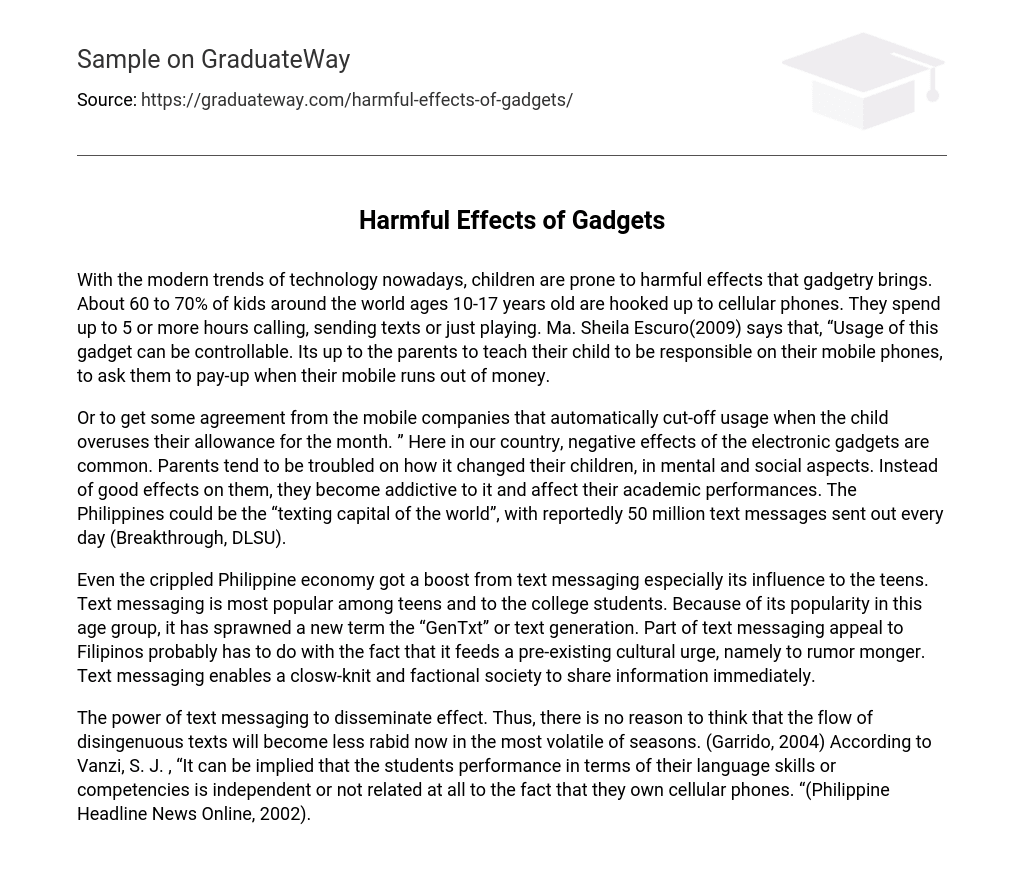In today’s modern era, the use of technology exposes children to negative impacts associated with gadgets. Globally, approximately 60 to 70% of children aged 10 to 17 are engrossed in using cell phones. These youngsters dedicate up to 5 hours or even more in activities such as calling, texting, or engaging in games. As mentioned by Ma. Sheila Escuro(2009), parents hold the key to regulating gadget usage by their children. They must instill responsibility in their kids regarding mobile phone usage and encourage them to recharge their phones when out of credit.
Electronic gadgets have had widespread negative impacts in our country, leading parents to worry about how they have affected their children’s mental and social well-being. Rather than experiencing positive effects, children become addicted to these gadgets, resulting in a decline in their academic performance. One potential solution is to negotiate with mobile companies to implement automatic disabling of usage when a child exceeds their monthly allowance. It is interesting to note that the Philippines is renowned as the “texting capital of the world,” with approximately 50 million text messages sent daily (Breakthrough, DLSU).
Text messaging has provided a boost to the Philippine economy, particularly among teenagers and college students, known as the “GenTxt” or text generation. This form of communication caters to Filipinos’ cultural desire for rumor spreading and allows for the immediate sharing of information in a close-knit society.
The power of text messaging is strong and continues to spread rapidly, especially during volatile seasons (Garrido, 2004). According to Vanzi, S. J., the ownership of cellular phones does not affect students’ language skills or competencies (Philippine Headline News Online, 2002).





